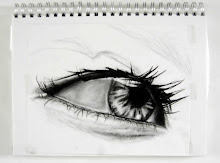Painting:
Julius Samuel describes the conventions of early deathbed portraiture: A “large number of portraits of deceased people [were] painted precisely in [a] manner depicting the head resting on a pillow, while the arms and the rest of the body are hidden under a linen sheet turned at the top over a darker blanket. Such pictures date as early as the beginning of the 16th century, and usually depict men of high rank or great distinction.”
As Judith W Hurtig explains: It was during the late Medieval and Renaissance periods in history that “The bed and bedroom became the locus of both birth and death.” Images of both secular and biblical stories were pictured by northern artists like Schongauer and Hugo van der Goes (in the case of the death of the virgin for instance), in elaborate interior spaces. “These [types of] pictorial models formed the basis for the English funerary iconography”.[1] It was these spaces that housed portraits of all kinds, including the deathbed portrait, which in the North, became a commemorative ritual. By the 17th century, the conventions of deathbed painted portraits loosened; Hands begin to be shown, as well, we begin to find the inclusion of iconography, as seen in the John Souch painting “Thomas Aston at the Deathbed of his Wife”.
Souch’s “Thomas Aston at the Deathbed of he Wife” is rife with iconography and inscriptions. Lady Aston herself, of whom the painting commemorates, takes up only a fraction of the compositional space. His brushwork is tight and precise. By using this kind of brushwork, he is capable of rendering defined detail, and does so discriminately throughout the picture plane, adding miniscule dedications and verse as well as symbolic possessions everywhere. (Notice the skull that Aston clutches, it is the visual representation of Memento Mori, the reminder of the frailty and mortallity of human life.)
John Donne:
 Writer, preacher and significant figure of Reformist culture: John Donne was perhaps one of the reasons for the popularity of the deathbed portrait in England. Donne, before his expiration in 1931, commissioned a portrait of himself in the guise of death, in a mock-funerary pose. In this portrait he wraps himself in a shroud-like cloth. He appears, as would a body being prepared for burial. The painting was designed to be included in the publication of his book of sermons on death, which coincided with highly publicized sermon on the same subject (which grew to be very popular). Not surprisingly the portrait sparked rumours of his passing away before his actual death.
Writer, preacher and significant figure of Reformist culture: John Donne was perhaps one of the reasons for the popularity of the deathbed portrait in England. Donne, before his expiration in 1931, commissioned a portrait of himself in the guise of death, in a mock-funerary pose. In this portrait he wraps himself in a shroud-like cloth. He appears, as would a body being prepared for burial. The painting was designed to be included in the publication of his book of sermons on death, which coincided with highly publicized sermon on the same subject (which grew to be very popular). Not surprisingly the portrait sparked rumours of his passing away before his actual death.Photography:
As John Hannavy notes, "after the wedding, the photograph of the baby was an obvious market to develop, and with child mortality much higher in the nineteenth century, deathbed portraits of children also proved a significant, if somewhat macabre market for the high street professional. In the event of unexpected infant death, the deathbed portrait often proved the only tangible proof that the child had ever lived." But deathbed photograph was not exclusive, examples depicting adults, children, even pets can be found rather easily. The market for such portraiture was wide, and tastes and preferences varied, and many a photographer would offer special services in an effort to capitalize, this includes the alteration of photographs so that the eyes of the deceased appear open, and the dead alive. In order to achieve this effect, the photographs would be painted, most often with little success. Unlike deathbed paintings, it is quite easy to find early deathbed photographs where the deceased are posed or painted to look like they're alive.
To read more about the symbolism attached to the deathbed throughout history try reading this article:







No comments:
Post a Comment